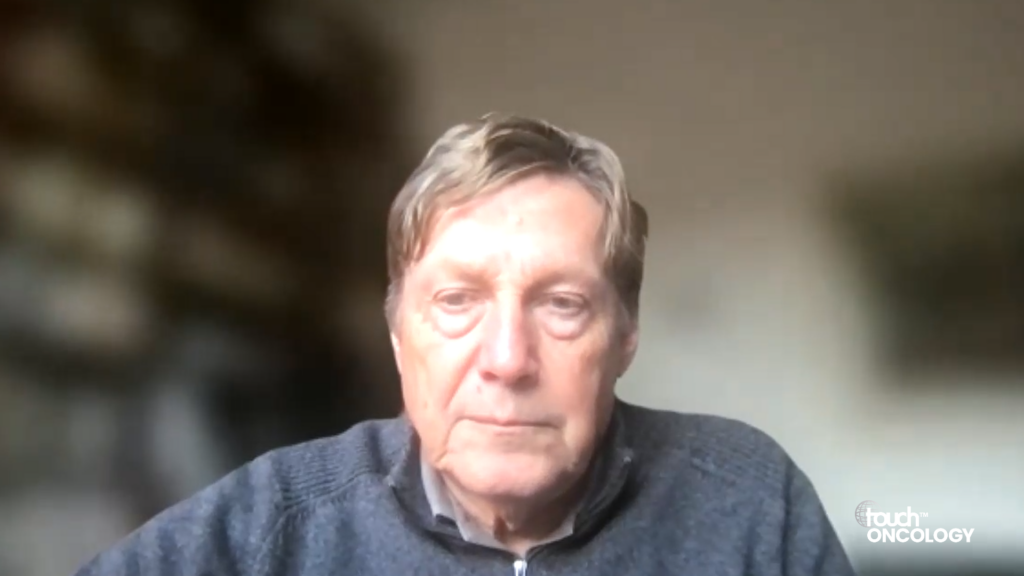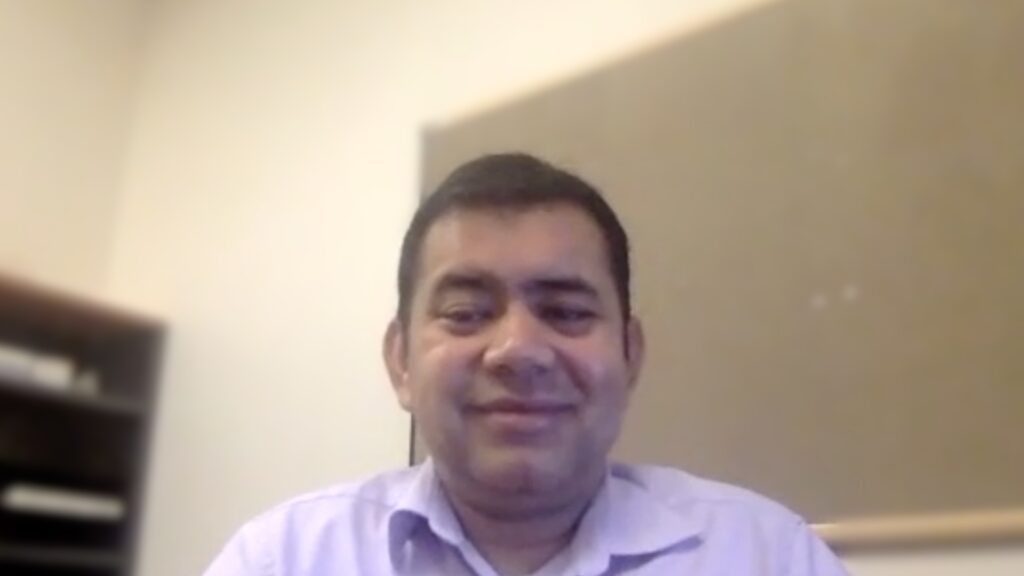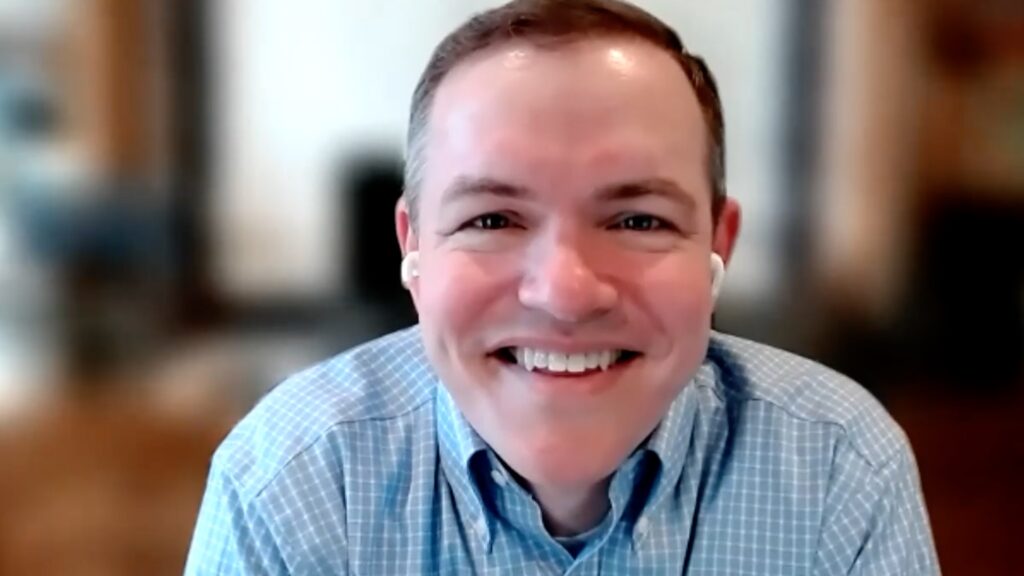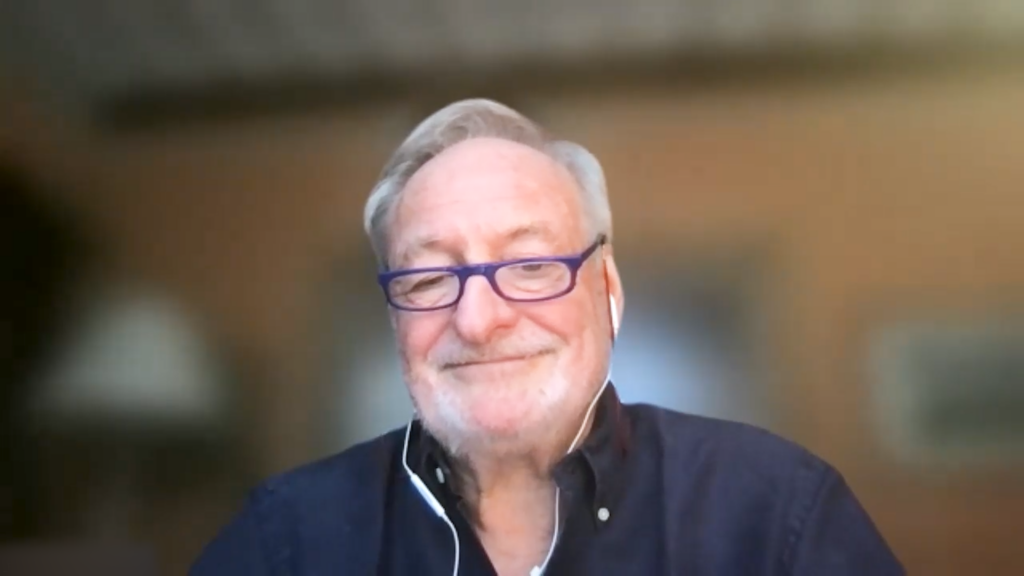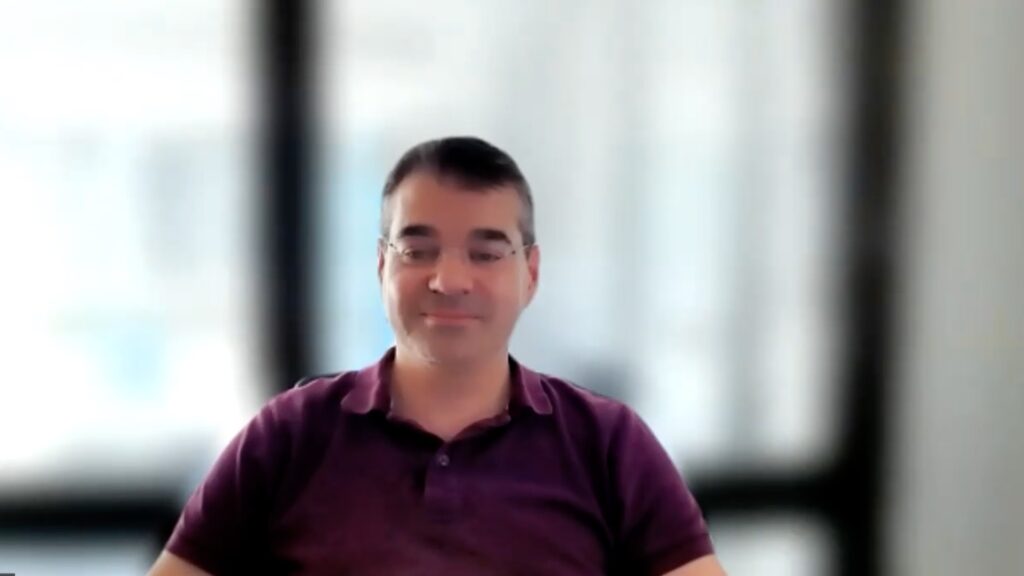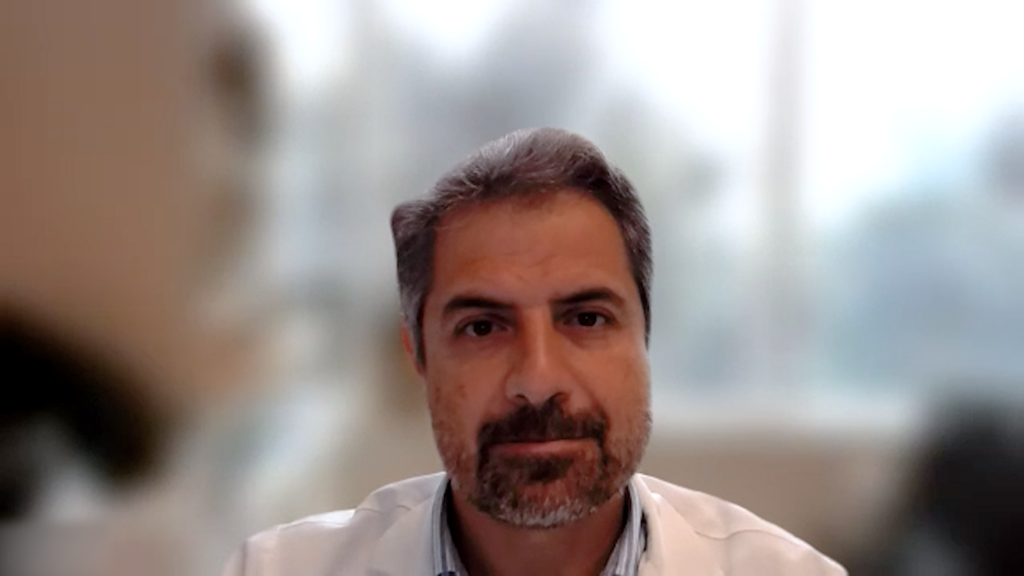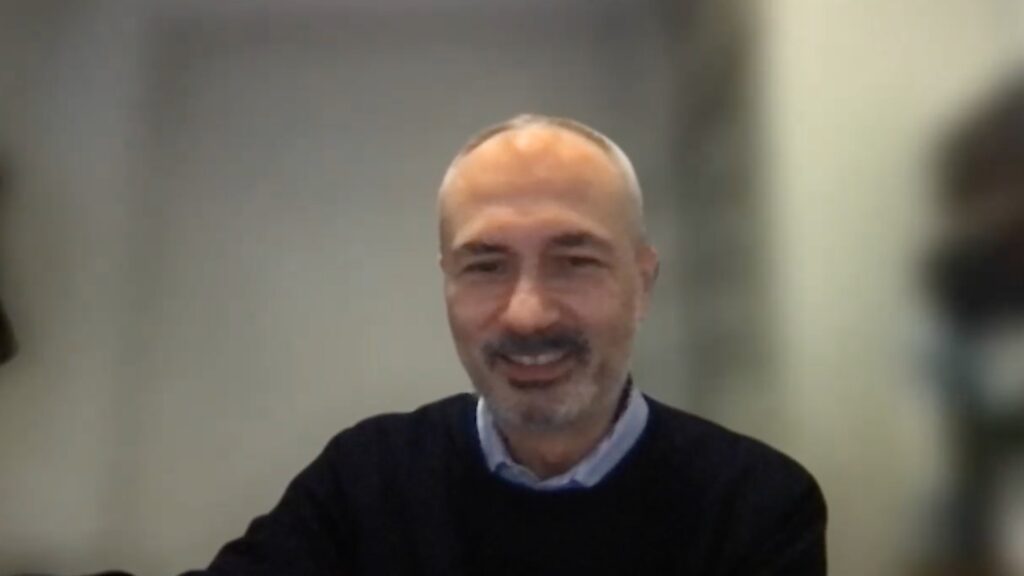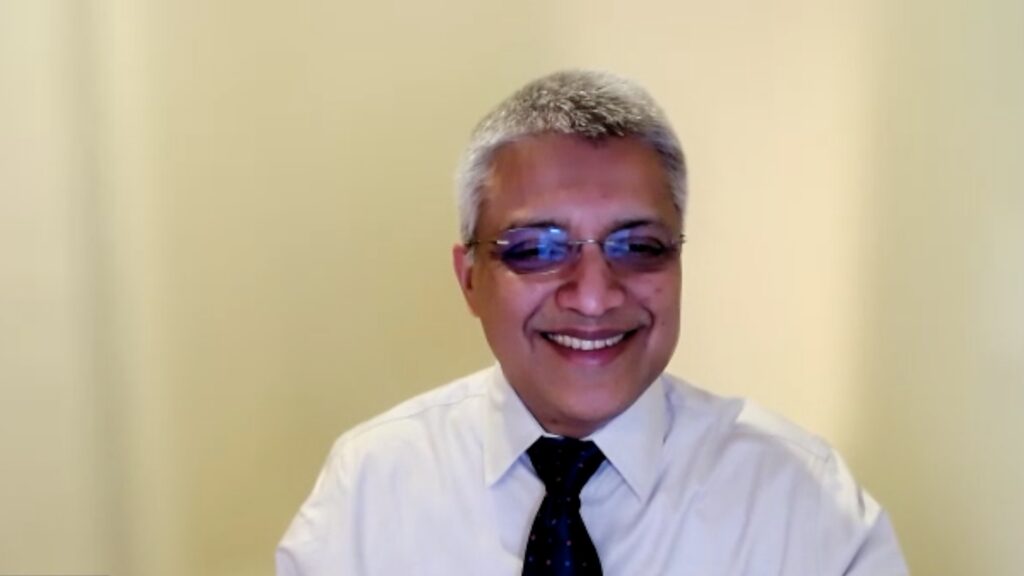Visionary Voices: Season 1, Episode 2
Few alliances have impacted patient care as significantly as the Myeloproliferative Neoplasms Research Consortium (MPN-RC). Established in 2006, the MPN-RC is an international group dedicated to advancing research and developing innovative treatment strategies for myeloproliferative neoplasms. In this episode, we speak with Prof. John Mascarenhas, about the coalition’s founding, operational mechanics and how their efforts have led to paradigm-shifting therapies in the field.
[Transcript] Hello, and welcome to our Visionary Voices podcast series… read more
[Gina Furnival] I’m your host, Gina Furnival and in today’s episode we are going to be examining an extraordinary journey of research collaboration and discovery.
We’re spotlighting the Myeloproliferative Neoplasms Research Consortium, or MPN-RC as it’s often known. Established over 15 years ago, this was the first international consortium of scientists purely dedicated to advancing MPN research.
Now today, I’m delighted to be joined by my co-host, Katrina Lester. Now it wasn’t hard to persuade you to join me today, Katrina.
[Katrina Lester] Hi, Gina. Thank you very much for having me today. No. It wasn’t. It wasn’t. We’re really in for a treat today. This is a really unique opportunity to hear first hand about how collaboration is done and the success that it can bring.
[Gina Furnival] So, well, for me, we already launched our platform touchHAEMATOLOGY.com last year. So haematology is pretty new to me, so I’m delighted to have Katrina here with me today. And I’m pretty sure today won’t disappoint.
Today’s guest is a well recognized leader in the field of myeloproliferative neoplasms. He’s also a key member of the consortium. So please join me in welcoming Dr John Mascarenhas. John, we’re thrilled to have you with us today. I hope you’re well.
[John Mascarenhas] I’m terrific. I’m really appreciative to be invited to join you guys today for this discussion, so thanks for having me.
[Gina Furnival] Brilliant. And so before we begin and talk more about the consortium itself, I thought we might start by just exploring what conditions are included under the umbrella MPNs and how they typically affect patients’ lives.
[John Mascarenhas] Sure. So MPNs or myeloproliferative neoplasms are a heterogeneous group of clonally derived stem cell-originating malignancies. So they’re blood cancers. They have some overlap, in terms of biology and the activation of the JAK-STAT signalling pathway. So there are certain commonalities in their origination, and their clinical features. But when we talk about MPNs, we usually segregate them by Ph-positive and Ph-negative. Ph-positive are those that have a classic, 9 and 22 translocation in the chromosomes, and that’s BCR-ABL CML. But the Ph-negative are the ones that we’re really focused on. Those are the non-CML MPNs. And classically, those three are essentially thrombocythaemia, polycythaemia vera and primary myelofibrosis. So ET, PV, and PMF, and both ET and PV can progress to MF, so collectively called MF. So these are the three MPNs that the consortium is really focused on. As they’re all chronic, they have the tendency for thrombosis and bleeding. And unfortunately, in some patients, a tendency to progress to even more advanced diseases like acute myeloid leukaemia and this type of acute myeloid leukaemia, which is a secondary to an MPN, is unfortunately a very difficult to treat leukaemia with a poor outcome. So there’s a lot of interest in trying to address MPNs as the chronic diseases they are to try to reduce the thrombosis that’s associated with it and improve the symptom burden that often, follows these diseases, but also to hopefully develop therapies that are disease course modifiying so that we are less likely to see this progressive event over time.
[Gina Furnival] So in terms of the MPN-RC then, what was the goal? What were the aims and ambitions of this consortium and how did it come together?
[John Mascarenhas] So I think it really is a testament to a vision that my mentor, my colleague, Ron Hoffman, had when he was originally in Chicago where, there’s a mechanism through the National Cancer Institute (NCI) funding for a P01 grant, which is a program project grant where, really the focus is in diseases like this that are relatively rare, where you want to really exploit the expertise of a number of different laboratory investigators from scientific projects that then provide the rationale to effectively, and maybe efficiently is even the better word, translate those insights into early-phase clinical trials and late-phase clinical trials in order to really have a more concerted effort to translate biology into clinical practice.
And I think it is a real boon to the field to have this consortium in place because it’s really independent of pharmaceutical influence. There is a clear need to pair up with pharmaceutical partners for drug availability. But, really, the science drives the interventions and the clinical trials, and it’s a group effort. You need someone to lead it.
That would be Ron Hoffman. He’s sort of the ringleader who gets all of the folks that have a vested interest in the science and then the clinical people together under one umbrella, and the grant provides that, the money is awarded to provide the infrastructure to conduct clinical trials across multiple centres. And at one point, this was a really large operation of, like, 43 centres across the world, multiple different countries that were all tied in together through the grant to run trials. So, I mean, I can get into the details of what those trials have looked like, but, really I think it sits alone.
I’m not really aware of another effort like this, of significant effort like this, of multiple different principal investigators, laboratory scientists, physician scientists, and statisticians, administrators, regulatory folks, everyone who has to come together to make this work. And it’s really a collaboration and a labour of love that brings us there. And with the goal at the end of the day is to really develop therapies that are paradigm shifting, that are game changing, that are, dare I even say, you know, potentially curative for our patients.
[Gina Furinval] So when did you first get involved in this then, and what really drove you to start?
[John Mascarenhas] So, it’s like most things in life. I don’t think you plan for these things. They just kind of happen. So I was a fellow, this was in 2007 I guess it was, that I met Ron Hoffman, and I was interested in malignant haematology, and I was working in a laboratory, at that time.
The understanding, or the beginning of the understanding, of the molecular underpinnings of the disease with JAK2 V617F mutation was reported. And I was in the lab of Dr George Atway, trying to understand the influence of this mutation on megakaryopoiesis. And it was at that point that Dr Hoffman left the University of Illinois, Chicago and came to Mount Sinai, and he took me out of the lab and said, John, you don’t have a future in the lab. I’m going to make you a clinical trialist.
And I had no idea what that meant, but I listened to him, thankfully.
And he sent me off on this path, and it has been exhilarating to say the least. So I’ve watched the field go from nothing, like we really had no therapies, to being involved right from the beginning in the earliest trials, like the COMFORT studies for the approval of ruxolitinib, and then the subsequent approval of three other JAK inhibitors.
So I’ve been able to get a feel and taste for that and the commercialization of these drugs, which have definitely improved our patients’ lives. But I think where it’s really become truly rewarding is that interaction with Ron Hoffman in the laboratory, the ability to be fortunate enough to be the person at the frontline that gets to interact with the laboratory scientists under his umbrella and be part of the process of translating that information from the laboratory into clinical trials. And we’ve had a lot of success and a lot of fun doing that, again, with this goal that we really are trying to target the malignant clone at the level of the malignant stem cell and really change the behaviour of the disease over the long run.
[Gina Furnival] It’s amazing how these things happen. It is just like sliding doors made up where you meet someone and….I mean, I left the lab and wasn’t asked to come back.
[Katrina Lester] Same for me. That’s truly inspiring hearing you speak about it, and I thought it’s quite paralleled. I mean, when we’re thinking about patient care, collaboration, multidisciplinary teams are the real buzzwords, getting the right clinical specialists in and working together. But this is the first time that I’ve really heard someone speak about that collaboration so early on in terms of the drug development and getting the different specialties in, combining the lab science and the clinical expertise right from the start, to really set the foundations and to hit the ground running.
So to me, that’s completely a novel way of thinking, and I’m sure has had many successes. It would be really great to touch on those.
[John Mascarenhas] So we’ve had a number of, I would say, translational successes that have been exciting. So for example, we really were the first group to take MDM2 inhibitors, which are negative regulators of the p53 pathway. So we’re the first group to evaluate idasanutlin, in polycythaemia vera, again, as an investigator-initiated trial, so not a pharmaceutical sponsored study.
And then that ultimately influenced the phase II study in PB. And, you know, I would like to think inspired also, current MDM2 inhibitor studies that are in late phase, phase III testing like navtemadlin. And, you know, the other thing I have to point out that I think really embodies what we’re really good at is the communication between the laboratory folks and the clinical folks. Because the laboratory based scientist is not going to be able to understand and develop and a protocol that’s meaningful in the clinic, and a clinical person is not going to be able to have the informed insights from the laboratory to know what targets they really want to go after and, importantly, what correlative studies can be done to understand why something doesn’t work and how to do it better the next time.
And I think that’s probably the greatest strength of the consortium is this really, intertwined, collaboration that really goes from the lab to the clinic and back to the lab again and back to the clinic. It’s like a never ending process. So the MDM2 inhibitor story, I think, was, you know, what really helped us understand where to go. It validated what was seen in the laboratory, in patients, and then we learned from those patient samples what we do, to do better now.
There are combination studies that are out there. We have proposed combination studies that I think will take us to the next level. So we saw activity, we saw very profound activity.
We saw difficulties with tolerability. And our goals are to try to tweak that to make it even more powerful, less toxic, combination approaches that are, again, informed by the science. We’ve also one of the first groups to lead a study of combination ruxolitinib and decitabine in advanced phase patients. These are patients who have accelerated blast phase MPN, which has a really poor outcome. And now the NCCN Guidelines endorse the use of decitabine in this setting based on those trials. We were also the first group to really rigorously evaluate, reduced intensity conditioning, haematopoietic stem cell transplantation, both with related and unrelated donors in patients with myelofibrosis.
Most recently, we published the results of the MPN-RC 118 study, which was an informed study coming from laboratory work generated by Anna Rita Migliaccio and John Crispino in one of the projects that led us to evaluate a drug called AVID200, which is a TGFβ 1/3 trap, as TGFβ has been shown to be very upregulated in myelofibrosis and is both fibrogenic in activity, but also negatively regulates normal haematopoietic stem cell function.
So we were very excited to see correlative data that supported this on-target mechanism of action. And, again, I think it helps us understand how best to move to the next, treatment or trial. So we’re always learning. And I think, again, that’s crucial. None of the patients that participate in these studies have wasted their time, or the greater good time. We learn from what we do. Even the trials that are, you know, seemingly not positive, we still learn insights that help us refine the next series of studies.
[Gina Furnival] Well, that’s quite the list of achievements and which are truly impressive. I’m curious to know, though, what’s happening at the moment? What are the exciting developments or ongoing projects that the consortium are currently working on?
[John Mascarenhas] We have two trials that are active right now. I just want to highlight. One is MPN-RC 120. This is, reparixin or CXCR1/2 antagonist. So it downregulates IL-1 signalling, which has been found by multiple labs including our group here to be important in driving the pathogenesis of myelofibrosis.
And then the second trial that’s active and running right now is MPN-RC 122 which is canakinumab which is the IL-1β blocker, which also has a significant rationale in this setting. And those two trials are open and recruiting through multiple centres in the USA.
And we have a number of trials that are still in clinical development. So it’s a consortium that is really still in full blossom with a lot of exciting science, medicine and correlative studies that really complement the work that’s done by many people.
[Katrina Lester] That sounds like a whistle stop tour or something intricate, complex, but that clearly is driving itself forward really organically, like you say, learning from one trial and taking it to the next, which I’m sure will have a huge impact, if not, you know, what it already is on treatments and the clinical development of patients as well.
With such an organization and the collaborative aspect, are there any challenges that come with that? And is the MPN-RC where you thought it would be? Have there really been any challenges that have really shaped how it’s progressed?
[John Mascarenhas] Yeah. Absolutely. So we face challenges probably like anyone else does on a daily basis, and those challenges can be regulatory challenges. It could be, you know, financial challenges. The reality is that the NCI, as generous as they are, you know, is restricted in how much they can provide for funding. So we do have to rely on outside sources of funding to supplement and to complement the funding for the infrastructure that we have. There’s a lot of regulatory, hurdles and obstacles that we wouldn’t be able to overcome if we didn’t have such a fantastic administrative core, and support from within the institution, as well as, the pandemic, which still affects us today, has severely affected a lot of the routine work of opening trials and recruiting patients.
We, you know, also pride ourselves in tissue banking. So we really think it’s critical to obtain peripheral blood, if not even bone marrow samples from patients, both on clinical trials but also that are followed off clinical trials at our centres, in a serial fashion because we want to understand what are the biologic mechanisms that lead to progression of disease. How do we understand that and develop treatments that can avert that? So there is a lot going on, and to coordinate this is challenging in itself across multiple centres with a lot of regulatory red tape.
So we have a fantastic biobank core, and we wouldn’t be able to really do any of this without our biostatistical core that helps us overcome a lot of the obstacles, of coordinating such a complex collaboration in terms of a database that allows us to interact and have all of this information centrally stored, and all the statistical analysis. I’m sort of lucky to get here and sit with the two of you and talk about it and boast about it. But the reality is it’s so much effort from so many different people that don’t get that recognition. So many of my MPN physician colleagues across multiple institutions that are, you know, championing these studies.
[Gina Furnival] For anyone listening today who is considering, basically, the value of doing something similar, forming a research consortium and maybe another disease. What advice would you give them?
Be persistent, because you will fail initially. I mean, I think that’s what you know, it takes time to get it right and sometimes multiple iterations to get the right folks together. And I think that’s probably the key thing is you have to have the right people together. You want people that are really truly committed to the vision and the plan and the program, and are dedicated to providing their attention and their time. Once you have, I think, those key folks in place, and the passion is there and the willingness to fail and get right back up and try again, because we’ve definitely had our setbacks.
But everyone is dedicated, so we overcome those setbacks. So just keep trying, but you got to, you have to, assemble the right people to have that right magic.
[Katrina Lester] Thank you. Those key skill sets, I think, could be applicable in many areas, that determination, the drive, the hard work, hopefully anyone listening that’s considering something in an alternative rare disease would take that on board.
What you’ve spoken about is really inspirational and really enlightening to hear how collaboration can really go global despite some of the challenges, and really starting the research from the ground up, going back to the early phase with the best minds present to really drive research forward, in the best way possible for patients. That really was my take of what you’ve said, and it’s been really a pleasure and an honour to hear that come from you yourself. So, thank you very much.
[Gina Furnival] I absolutely agree, Katrina. I think what we’ve seen today is the cornerstone that this consortium plays in advancing treatment and changing patients’ lives. So a huge, huge thank you for joining us today.
We’ve really enjoyed speaking to you, and I hope the consortium continues to grow and be the success it has been.
[John Mascarenhas] Yeah. Thank you very much. I really enjoyed the conversation today.
[Gina Furnival] Remember, if today’s episode does resonate with you, please do subscribe and share your thoughts with us with your review. Your insights are crucial in helping us refine our content and continue to deliver the stories and information you love.
[Katrina Lester] Yes. We would genuinely love to hear from you. Find us on LinkedIn by searching for Touch Medical Media, and follow our podcast series on Podbean under Visionary Voices, insights from healthcare professionals.
[Gina Furnival] Thanks. Well, that’s all for today’s episode. Until next time, it’s goodbye from us.

John Mascarenhas, MD, is a Professor of Medicine at the Icahn School of Medicine at Mount Sinai and a member of the Tisch Cancer Institute. He directs the Adult Leukaemia Program and leads Clinical Research in the Myeloproliferative Disorders (MPN) Program. As a clinical investigator focused on MPNs, he oversees clinical trials in the MPN Program and is the Principal Investigator for the National Cancer Institute’s sponsored MPN Research Consortium and has led numerous clinical trials.
Prof. John Mascarenhas discloses advisory board or panel fees from AbbVie, Bristol Myers Squibb, Celgene, CTI BioPharma, Galecto Biotech, Geron Corporation, GlaxoSmithKline, Imago BioSciences, Inc., Incyte Corporation, Kartos Therapeutics, Karyopharm Therapeutics, MorphoSys, Novartis, Pfizer, PharmaEssentia and Sierra Oncology. Grants/research support from AbbVie, Bristol Myers Squibb, Geron Corporation, Incyte Corporation, Kartos Therapeutics, Novartis and PharmaEssentia.
This content has been developed independently by Touch Medical Media. Unapproved products or unapproved uses of approved products may be discussed; these situations may reflect the approval status in one or more jurisdictions. No endorsement of unapproved products or unapproved uses is either made or implied by mention of these products or uses by Touch Medical Media. Views expressed are the speaker’s own and do not necessarily reflect the views of Touch Medical Media.



